Movie Review – The Hobbit: The Battle of the Five Armies (A Second Opinion)
As Peter Jackson’s awe-inspiring Hobbit trilogy comes to a close there seems to be only one question on everyone’s minds: “Did this adaptation need to be stretched into three parts?”. The short answer is no it did not, but the long answer? That one is a bit more complicated. The Hobbit: The Battle of the Five Armies isn’t just the conclusive final act of an adaptation of The Hobbit. It’s the final film in a 6-part Middle-Earth saga that doesn’t just work in the literary novel of the same name but moments from J.R.R. Tolkien’s Appendices, events that were often explained and never included in his novels such as The White Council’s assault on Dol Guldur and original sequences that will bridge the gap to the famed Lord of the Rings trilogy. As a massive fanboy of these beloved stories who holds the original trilogy as my favorite movies of all-time, I can pretty much compare having 3 Hobbit films to having 3 cupcakes. I would be better off with only 1 or 2 of course but my God, I can’t resist that third one. Sure I’ll feel bad about myself for a little bit but when given the option I’ll always take more, and that’s basically the feeling this trilogy managed to embody. They’re a culmination of Tolkien’s greatest hits as told through the eyes of Peter Jackson. They’re also one hell of a love letter to the fans with The Battle of the Five Armies standing as the proudest, most complete and thrilling of the three chapters. Seeing the curtain fall on Middle-Earth for what could be the last time is the very definition of bittersweet.
The film opens exactly where The Desolation of Smaug ended, and that’s with the dragon’s utter destruction of Lake-Town. Our characters are sent spiraling out of the city as Smaug unleashes his fury upon innocent lives who are paying the price for Thorin’s actions. It’s a dazzling display of fiery death that lives up to the infamous description in the books. It might’ve been one movie to late but to watch Smaug go all out is still a sight to behold. To be able to jump right into the events of the last movie and start this chapter off with a bang is a great thing for pacing purposes – but at the same time it feels as if the be-all, end-all villain of the last entry was dispatched with too quickly. While yes this will work best after watching the previous movie in a marathon style, it also won’t live up to expectations when viewed on its own. The pacing is something that needs to be mentioned here since this is by far the shortest of the 6 Peter Jackson Middle-Earth movies and it definitely feels that way. Once the opening set-piece is finished we’re hurried down a trail that doesn’t end until the very last frame of the picture. I’m not sure anyone’s ever described the word “brisk” to sum up how a Lord of the Rings film felt but The Battle of the Five Armies should be the first to take up that mantle. The events triggered from Thorin and his company entering The Lonely Mountain are felt all around Middle-Earth as it makes this feels like a sprint to the finish.
While Bilbo Baggins has always been the heart of this film trilogy, it’s also been the character of Thorin Oakenshield who took front and center for more than a few scenes. The decision to beef up his role as part of a three character centered movie alongside Bilbo and Gandalf is one that was an absolute necessity. As much as this is Bilbo’s journey (and we’ll get to that in a second) it’s also very much the fall and redemption of Thorin Oakenshield. His “dragon sickness” and descent into greed, chaos and pure paranoia are some of the most memorable scenes in the movie. I’ve been wanting this Hobbit trilogy to slow down for a second and focus on intimate moments between each character that closer embodies what they did with The Lord of the Rings, and I got that with this one. Having reclaimed the treasure for himself, Thorin is now feeling the lust for greed and gold that poisoned the mind of his grandfather and ultimately drove him mad. Richard Armitage plays this sort of scatter-brained sense of addiction with a truly violent temper. To watch him struggle with this disease is a heartbreaking thing to witness since you know who this guy is and really feel for the character. He gravely feared turning into his grandfather and pledged his life to ensure that didn’t happen, so watching him struggle with that really helps make his arc relatable.
So while yes, there are scenes focusing on Thorin, Bard the Bowman (who vaults into top billing status through a stoic performance by Luke Evans) and the 3 elves, the movie is very much Bilbo’s story. The beloved hobbit who’s been criticized by some as being relegated to second or third billing in a movie literally titled “The Hobbit” gets his time to shine, and he feels more centralized to the plot than he ever has before. There are few – if any – moments throughout this final chapter that aren’t directly affected by Bilbo himself. It’s a fitting way to close the trilogy as Martin Freeman gives his best work in as the famed titular character. Simply put, he is perfect as Bilbo Baggins. Freeman is so endearing, so likable and so wonderfully able to slip through comedy and drama that it’s easy to see how the Bilbo Baggins we meet in The Fellowship of the Ring is one of the most celebrated hobbits in The Shire. The transition between Ian Holm as Bilbo and Martin Freeman is a seamless one thanks to the performance from Martin Freeman. He strikes up the everyday quality that a character like Bilbo needs to have but also brings the talent needed to drive home the emotional element, and my god is there a ton of emotion scattered throughout the final 20 minutes. For those of you unfamiliar with the novel (though seriously – how have you NOT read this yet?) I’ll refrain from speaking of this, but you need to have your tissues in hand as the climax comes to a close.
Speaking of the titular Battle of the Five Armies, it’s pretty much exactly what you would expect it to be. We’re treated to enough bloodshed, decapitations and steel on steel action to really end this series on a massive scale. You have Thranduil and his army of Mirkwood elves who are there to reclaim their stake in the treasure of Erebor, Dale and his army of men aligning with Thranduil and looking for the same thing, Thorin and his company barricaded behind the walls of Erebor, Thorin’s cousin Dain Ironfoot who shows up with a couple hundred of the most fearsome warriors from the Iron Hills and Azog’s 500 deep orc army with cave trolls, wargs and a lust for death and destruction. It is absolute mayhem in the highest form of fantasy-adventure filmmaking. Organized chaos is probably the best way to describe it as each individual battle that’s happening at the same time is never once unclear or lacking in a singular focus. We know where everyone is, what their goals are and what their progress is as we cut from fight to fight. This is really where Peter Jackson succeeds as a filmmaker and it makes sense since this is familiar territory to him. So much of his Lord of the Rings movies – and in particular the final two – are films built upon 3 or 4 stories happening at the same time, and this is no different.

With the battle however you get a majority of the problems I had with not just this movie but with The Hobbit trilogy in general. There is way, WAY too much CGI in just about every major action sequence. CGI orcs, CGI elves, CGI humans and even CGI animals and a main character at one point. Jackson’s decision to do away with miniatures and a majority of simple things like make-up and heavily costumed orcs is a decision that will haunt this film series and show it’s age much quicker than usual. There is simply no reason to have this much computer-generated effects when you can do it with a person in a costume and it’ll feel fifty times more realistic. There are definite moments where what you’re watching slips further away from reality and your brain is thrown into video-game territory. I love Legolas and he gets some of the very best action sequences once again, but there’s some instances that are so over the top that I’m not even sure they would include it in an actual video-game – let alone this movie. It gets to a point where these characters hover around immortality as it seems like nothing will ever be too dangerous or too much to strike them down. When you’re taking on 40-50 orcs at once and surfacing without a scratch it tends to push the realism further from your mind. Yes, this is a series with giant eagles, talking trolls and an actual sleigh of rabbits but you need to keep it grounded in order to be invested. I need to believe these heroes are in danger to care for what’s happening on screen and for a certain few this never seems to be the case. Speaking of things that didn’t work for the movie: the entire character of Alfrid, the Master of Lake-Town’s servant was so painfully embarrassing and nonsensical in his actions that he didn’t serve a single purpose. He exists as a form of comic-relief that’s never once needed, never once funny, and is thrust into the most oddly timed situations that grind the movie to a halt. Do we really need the oddly timed slapstick humor of a man cross-dressing as a woman and adjusting his bra full of treasure in the middle of a blood-soaked battle? We get it, he’s a coward (and this is supposed to be.. funny?) but he doesn’t ever get to redeem himself which would be the only reason to add a character like this, so simply put: what was his purpose? That was the most drastic and glaring of the negatives here but it goes to show that these films are not without their faults. Everything had to be bigger and grander and over the top in its call to fan service when in reality this trilogy should’ve been a more scaled back and personal journey. Not to mention while the pacing is brisk and light, it also feels like there’s key moments that are either cut short in a jarring fashion, held back or left out all together (Beorn being the prime example of this). There are certain times where you’re left wondering “what could have been” but luckily it’s few and far between since the good outweighs the bad.
The human emotional element is probably the brightest and most cherished aspect of The Battle of the Five Armies for me. It is the heart of the movie and for that it rises above all else to really showcase the best of what this series has to offer. Wonderful characters that we fall in love with and root hard to survive and endure are given free rein to push the story forward. The Tauriel and Kili romance that never should’ve worked and felt a bit like fan-fiction when it was introduced is one of the most genuine aspects of this trilogy, and it’s showcased again here. Both Aidan Turner and Evangeline Lilly have such organic and adorable chemistry together that it doesn’t matter who they are and how they came to be, it just matters that they care for each other. The point of that romance is to showcase that love perseveres above all things, overcoming outdated barriers of stereotypes and ignorance. Their “bi-racial love” is something unique about this adaptation that holds true as one of the best things this trilogy ever did. Bard’s love for his family is showcased as well as Gandalf and Galadriel’s friendship that transcends what that word can mean. All of this is again second fiddle to Thorin and Bilbo who share arguably the best scenes together in the film. This heavy-handed drama isn’t just something that’s thrown in for the sake of the film and to make it feel like a weighted journey, it’s there because it’s organic and it works to help drive the narrative.
The Hobbit: The Battle of the Five Armies is a true spectacle that showcases both the trilogy’s highs and lows, while never teetering further away from the character’s core of the story. I love this trilogy – faults and all – for what it brought to the Tolkien lore and for what it gave me to pair alongside The Lord of the Rings. It will never stack up to the latter trilogy but Jackson never once set out to accomplish such an impossible task. These are the sugary sweet dessert plates to my Lord of the Rings main-course and I wouldn’t want it any other way. They gave us a worthy counterpart and helped redefine the fantasy genre that’s been middling recently when not embellished in Tolkien’s stories. The Hobbit trilogy brought fans back to one of the most beloved, iconic and important places in movie history, Middle-Earth. When that last transition to The Fellowship of the Ring ends and the credits done in the style of The Return of the King play on the screen to Billy Boyd’s “The Last Goodbye”, then any Lord of the Rings fan sitting in the theater will truly feel like they went there and back again. And that’s all that really, honestly matters.
Thank you Peter Jackson.
8.5/10
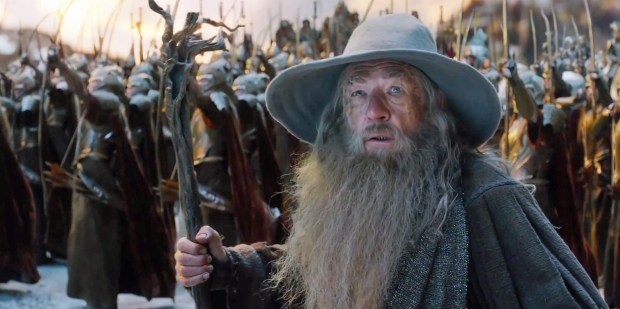

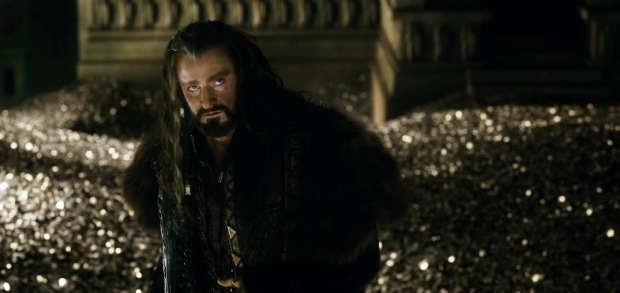
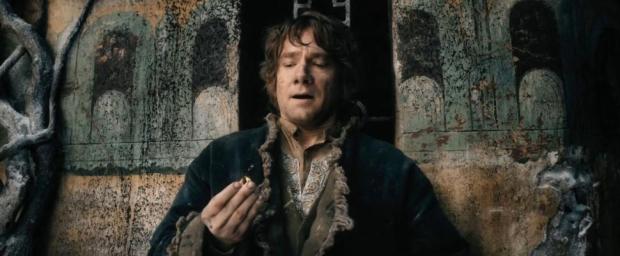
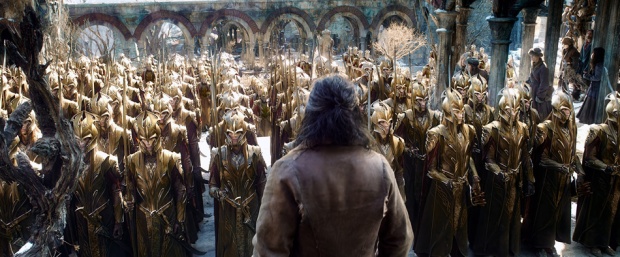
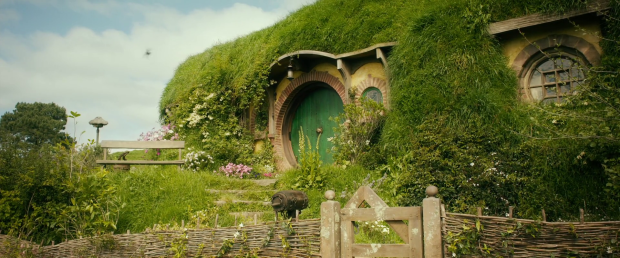

A fun movie to end the trilogy on. It was unnecessary to say the least, but it was still entertaining to me. Good review.
LikeLike
Love the review. Looking forward to seeing this very soon.
LikeLike
Great review. I agree this was the best one of the most recent three by jackson.
LikeLike